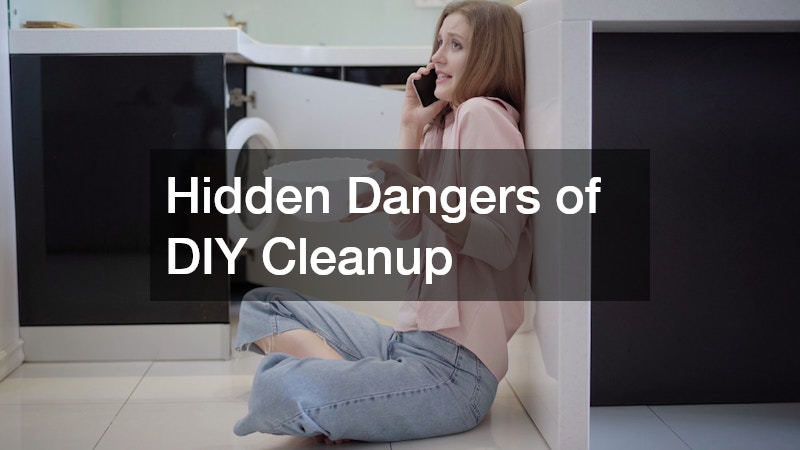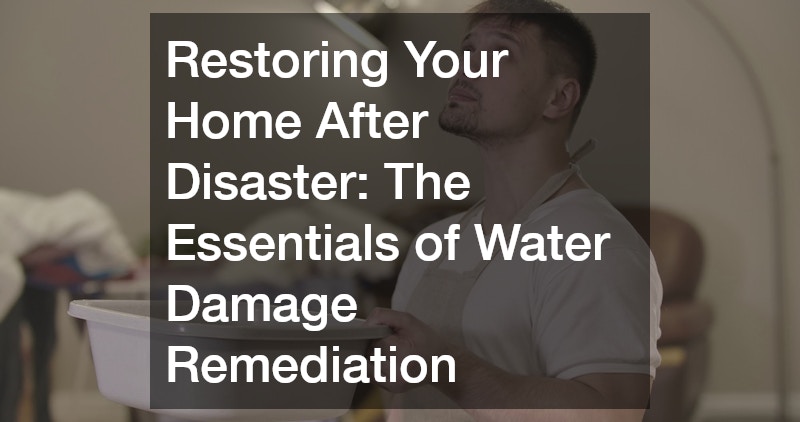Water is essential to life, but when it invades your home in the wrong way, it becomes a destructive force. From burst pipes to natural disasters, water damage can strike suddenly and with lasting consequences. That’s where water damage remediation comes in—restoring safety, comfort, and livability to your property after a flood, leak, or moisture intrusion.
Understanding the Impact of Water Damage
Water damage isn’t just about soaked carpets or warped flooring. It can penetrate your home’s structural integrity, weaken support beams, promote mold growth, and even contaminate electrical systems.
While the initial signs—like pooling water or stains on the ceiling—are easy to spot, the underlying issues often remain hidden.
Common Causes of Water Intrusion
Water can enter a home in various ways, including:
-
Plumbing Failures: Burst pipes, leaking fixtures, or backed-up drains can release large volumes of water quickly.
-
Appliance Malfunctions: Dishwashers, washing machines, water heaters, and refrigerators are frequent culprits.
-
Weather Events: Heavy rainfall, hurricanes, and flash flooding can overwhelm even the best drainage systems.
-
Roof Leaks: A small breach in the roof can allow rain to trickle in, slowly causing significant damage over time.
-
Foundation Issues: Poor drainage or cracked foundations may allow groundwater to seep into basements or crawlspaces.
Each of these scenarios can range in severity, but all require immediate and appropriate action to prevent lasting harm.
What Is Water Damage Remediation?
Water damage remediation refers to the complete process of cleaning, drying, sanitizing, and restoring a property after water intrusion. It goes beyond just removing visible water—it targets the source, prevents future damage, and ensures the home is safe to occupy again.
Remediation typically includes several key steps:
-
Inspection and Assessment: Professionals use moisture meters, infrared cameras, and visual inspections to determine the extent of the damage. This helps guide the scope of work and identify hidden pockets of moisture.
-
Water Removal: High-powered pumps and vacuums extract standing water from floors, carpets, and other surfaces. Quick removal is crucial to minimize further damage.
-
Drying and Dehumidification: Industrial-grade air movers and dehumidifiers are deployed to dry out affected materials and spaces. This step can take several days, depending on the severity of the intrusion.
-
Cleaning and Sanitization: Contaminated water can carry bacteria, chemicals, and pathogens. Professionals clean and disinfect all surfaces, using EPA-approved antimicrobial agents to ensure the environment is safe.
-
Restoration and Repairs: The final stage may include repairing drywall, replacing flooring, repainting, or rebuilding damaged sections of the home. In some cases, items like insulation, carpet, or furniture may need to be removed and replaced entirely.
Why Timeliness Matters
Water damage can escalate quickly. Within the first 24–48 hours, mold can begin growing in damp areas, even those you can’t see. The longer water sits, the more likely it is to cause irreversible damage to materials and foster unhealthy indoor environments.
Acting fast can mean the difference between a minor cleanup and a major renovation. Trained professionals bring the expertise and equipment necessary to speed up the process and prevent secondary damage.
Hidden Dangers of DIY Cleanup
While minor leaks may be manageable with towels and fans, larger water intrusions often demand professional help. DIY methods may dry the surface, but fail to address underlying moisture. That hidden dampness can linger in subflooring, behind walls, or in HVAC systems, leading to mold, rot, and air quality issues.
Additionally, water from outside sources or sewage backups is considered “gray” or “black” water, meaning it may be contaminated and unsafe to handle without proper protection. A certified remediation team knows how to handle these risks safely and efficiently.
Mold: A Major Consequence of Water Damage
Mold is one of the most common and dangerous outcomes of unchecked water damage. It thrives in humid environments and spreads quickly, releasing spores that can cause allergies, respiratory issues, and even neurological symptoms in sensitive individuals.
Part of the water damage remediation process involves inspecting for mold growth, removing it when necessary, and restoring indoor air quality. Preventing mold isn’t just about drying the area—it also requires controlling humidity levels and sealing off vulnerable areas to stop future outbreaks.
A trustworthy remediation company won’t just clean up the mess—they’ll walk you through the entire restoration journey, ensuring you feel informed and supported every step of the way.
Water damage is never convenient, but with the right response and professional help, it doesn’t have to be catastrophic. Whether caused by a plumbing mishap or a storm, fast and effective water damage remediation helps restore your home, protect your health, and give you peace of mind.
Restoring your home is more than just drying floors and patching walls. It’s about reclaiming your space, preserving your investment, and ensuring a safe, clean environment for your family. When water invades, take action quickly—and don’t go it alone.

